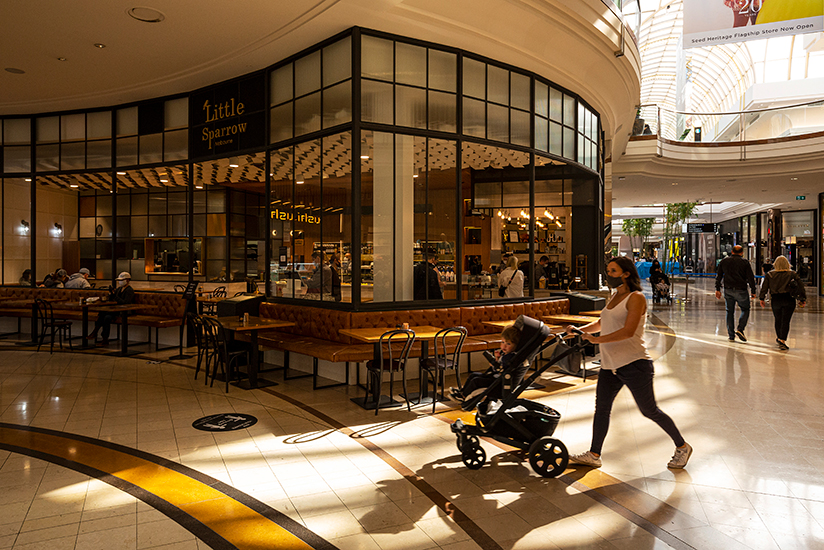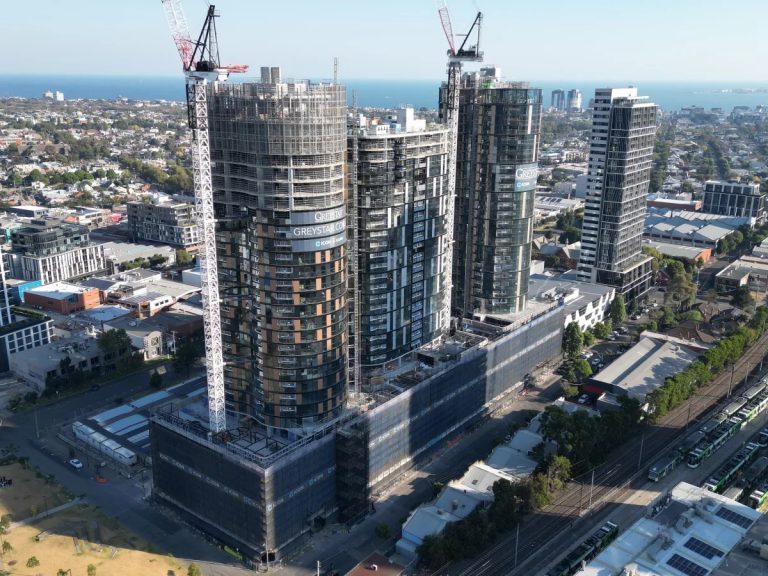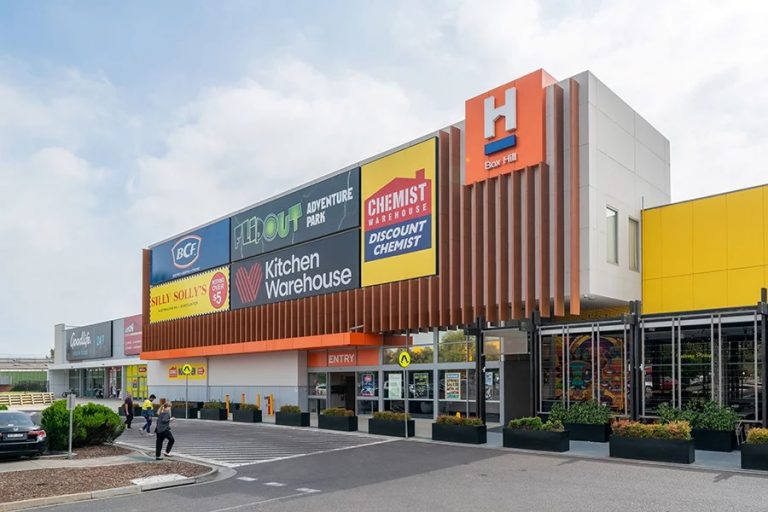What is retail real estate?

First things first, what actually is retail real estate? Put simply, retail properties are used exclusively to market and sell consumer goods and services.
Retail stores include everything from supermarkets, dry-cleaners, cafes, florists, pharmacies, bike shops, fashion stores and so on.
They range from shopping centres, individual stores and pop-up shops to ‘large format’ stores like Bunnings.
So, while corporate retail giants such as WesFarmers can daunt small-timers with their tremendous range, the sky’s the limit for inexperienced retail investors.
Here’s why.
Where’s a good place to start in retail investment?
New or inexperienced retail investors typically start with fuel, fast food or convenience centres, according to Savills’ Michael Harcourt.
The retail investments associate director said these properties’ price points enabled investors to start their retail journey from $2 million to $7 million.

Convenience stores are a great place for mid-range retail investors to start. Picture: Getty
“This seems like a lot of money but it’s what we call an entry-level price point, ” Mr Harcourts said.
He added that new retail investors typically wanted a low-risk property that was easy to manage and didn’t present any major concerns, which was why service stations and fast food investments were popular.
“These properties are simple, set and forget long term assets,” he said.
“They don’t need a lot of hands-on management so you don’t really need to do anything other than collect a paycheck from your tenant.
“They also usually have just one tenant and have a national, blue-chip brand like 7-Eleven so you can know with confidence that the tenant won’t have any trouble paying the rent every month.”
Retail property investment benefits
Retail real estate can offer investors long term income security thanks to the sector’s yields and strong returns.
Financial barriers to investment entry can also be lower for smaller retail properties while the potential to rearrange or change fit-outs can widen the net of prospective tenants.
1. High yields and strong returns
“Retail’s good returns are certainly a lot better than those of industrial and office,” CBRE research director, Kate Bailey said.
As well, retail investments typically achieve high yields of 5%-6%, according to Mr Harcourt.

Retail investments typically achieve high yields of 5%-6%. Picture: Getty
“Yields on fast food investments and other outlier retail properties are even sharper these days and can achieve yields of anywhere between 3%-5%,” he said.
However, Ms Bailey said some retail investments could achieve even better yields.
“I’d say retail yields are a bit tighter and more towards 4%-6%,” she explained.
“But the sector’s bigger, softer yields are a definite positive for investors and we’ve seen strong capital growth for well-located assets with strong covenants.”
2. Lower entry barrier
Small-time retail investors will appreciate retail’s lower financial barriers as well, according to Ms Bailey.
“Buying a really big warehouse or an office building can be more challenging for small-time investors to get into,” she explained.
“It’s much easier for these buyers to purchase a small strip shop or local store.”
3. Diverse range of tenants
Another positive for retail investors is the potential for a very diverse tenant base, which can be highly helpful if a particular industry isn’t performing well, Mr Bailey explained.
“If you own a retail tenancy, you can put a restaurant in there or a traditional clothing shop, gift shop or something else,” she said.
“Being a little bit creative about how your tenancy works will definitely lessen the impact of vacancies.”
4. Long-term leases and rent incentives
Retail real estate investment leases can range from three to ten years or more, Mr Harcourt explained.
“Convenience centres, speciality tenancies, bakeries, and supermarkets have leases of anywhere from three to five years or sometimes seven years,” he said.
“Fuel and fast food assets can have leases of 10 years or more.
“But in any event, retail leases are certainly longer than your average six months residential lease.”
Retail leases can also include the investor incentive of turnover, or percentage, rent, which sees landlords receiving a percentage of a business’s gross revenue, on top of its base rent.
Retail property investment disadvantages
Disadvantages to retail investments can include the growing challenge of online shopping as well as low supply levels.

Online shopping has challenged retail investors. Picture: Getty
Investors who own several tenancies will need to consider a more hands-on approach while those purchasing a discretionary retail property should be well versed in risk management.
1. E-commerce challenges
“With the onset of e-commerce, it’s very much a flight to quality at the moment,” Ms Bailey said.
“This means that if you own retail space in a more secondary location, you might be more challenged with tenant vacancies.
“We’ve also seen an increase in vacancies in CBD areas recently so retail investors should expect that letting up periods – or the time in which their property is vacant between tenants – might blow out a little bit.”
However, the flip side to this challenge is that retail stores are becoming an important part of the delivery network for online products, according to Ms Bailey.
“These products don’t always come from a warehouse but from a store so retail properties are still important in facilitating the quick delivery of products,” she said.
“They’re also a really important part of the omnichannel moving forward.”
2. Lack of supply
Unprecedented demand for retail investments during 2021 has resulted in a severe lack of supply for such properties, Mr Harcourt explained.
He said this situation resulted from a low debt environment where record low interest rates weren’t tempting people to keep their funds in the bank.
“This environment where money is cheap is really what’s motivating the demand for retail investment,” he said.
“Now more than ever, investors need to find somewhere to put their capital as there’s really no point in leaving money in the bank.”
While Mr Harcourt is encouraged by this high demand, he said it was also hindering supply with retail investors reluctant to sell.
“Finding retail property investors and buyers isn’t a challenge but what is a challenge is a lack of good quality, retail investment supply,” he said.
“People like a cash flow but they don’t necessarily want to sell their retail investment.”
3. Additional supervision and communication
Retail investors who own several properties will need to factor in a more hands-on approach to their ownership, Mr Harcourt explained.
“There are a few more moving parts when you have multiple tenancies,” he said.
“For example, convenience centres with six tenancies do require a little bit more of a hands-on approach.
“You might have to employ a property manager to look after it but then again, you’ll also get a much better return.”
4. Risk management
“Investors should be mindful of tenancies which are overweight in discretionary retail or spending,” Mr Harcourt said.
“These are businesses that we can do without when money is tight – or if there’s a COVID lockdown – such as clothing stores, restaurants or gyms.”
Retail real estate post-COVID
With banks no longer an appealing place for investors’ funds, Mr Harcourt expects retail properties will continue to experience high demand.
“We have inquiries from new investors every day,” he said.
“They want to find somewhere to invest their capital and get a return and there’s next to no value in leaving money in the bank right now.”

The retail sector is expected to enjoy continuing growth in 2022. Picture: Getty
This high demand follows a low key year for retail investment in 2020 when COVID first swept the globe, Mr Harcourt explained.
“When COVID started in March 2020, everyone was a little bit uncertain and they didn’t really know where the world was heading so retail investment really came to a bit of a standstill,” he said.
“But towards the end of 2020 and certainly throughout the entirety of 2021, there’s been a huge demand for retail investments and now, we’re seeing a new investor born every day.”
Ms Bailey concurred adding that in 2020, the majority of investors believed retail would completely die out and online shopping would take over.
“Everybody started putting their money into office and industrial properties but what they’re now realising now is that you can get a good return on retail,” she said.
“Retail didn’t die and it’s actually performed pretty well and I think people are now seeing the importance of this sector.”
Ms Bailey said retail investment rents had also stabilised.
“Going into the new year, with international students coming back and borders reopening, people are really confident about sales returning in 2022 and there’s a pretty buoyant atmosphere out there,” she said.







